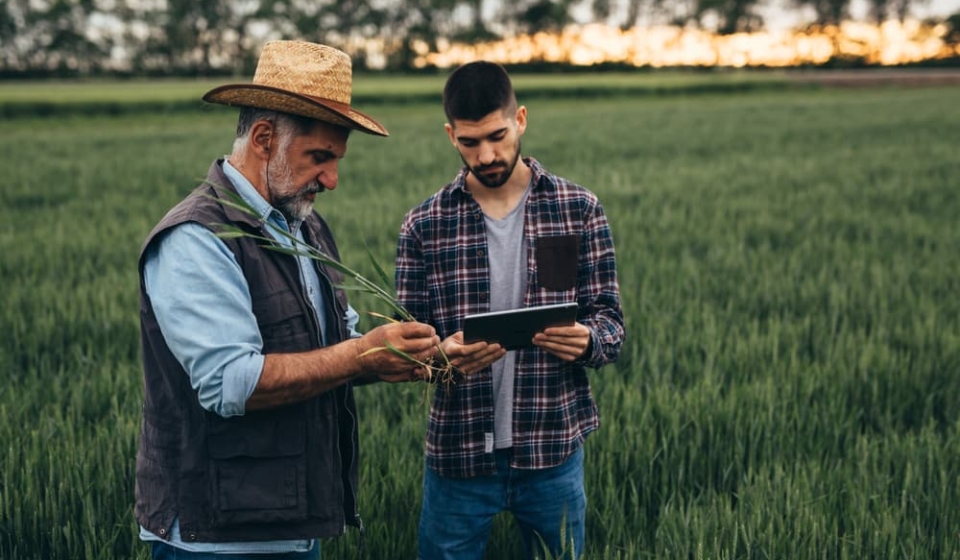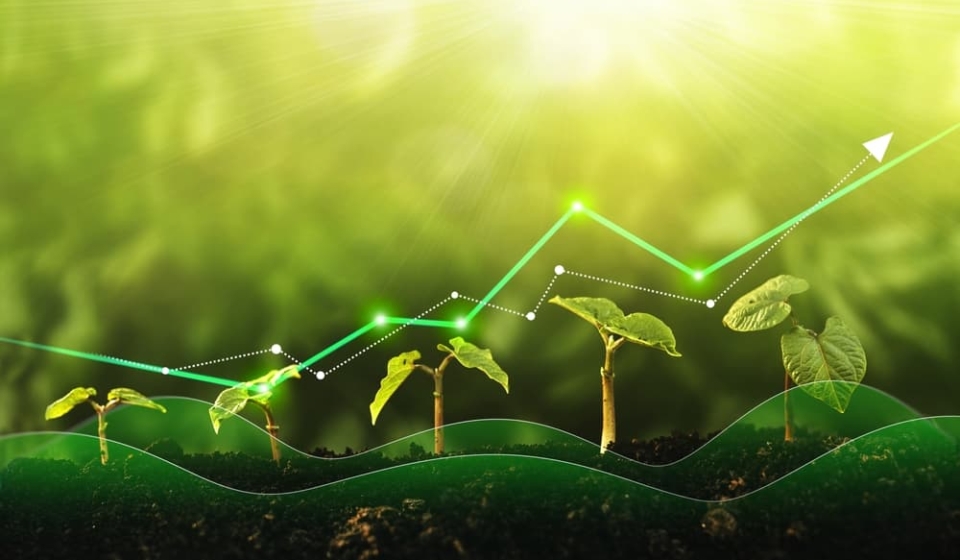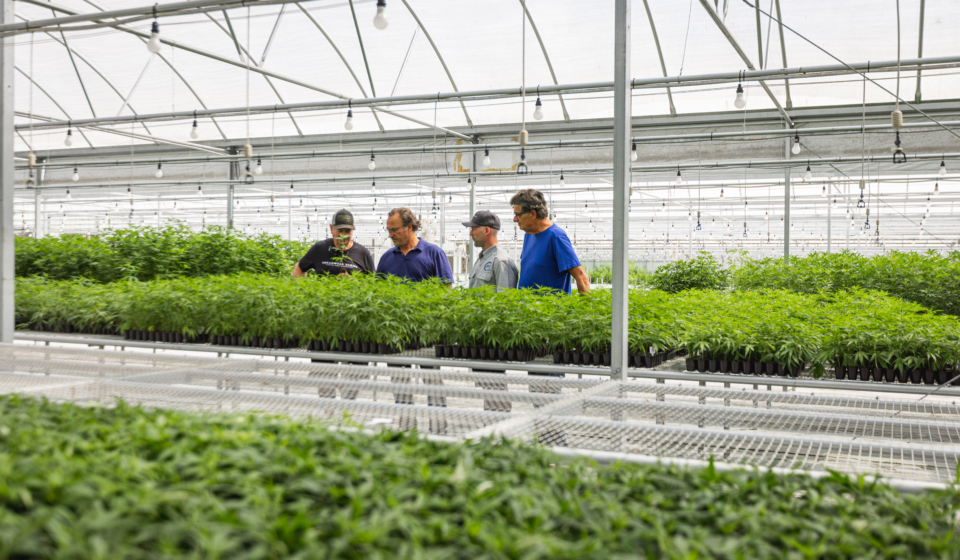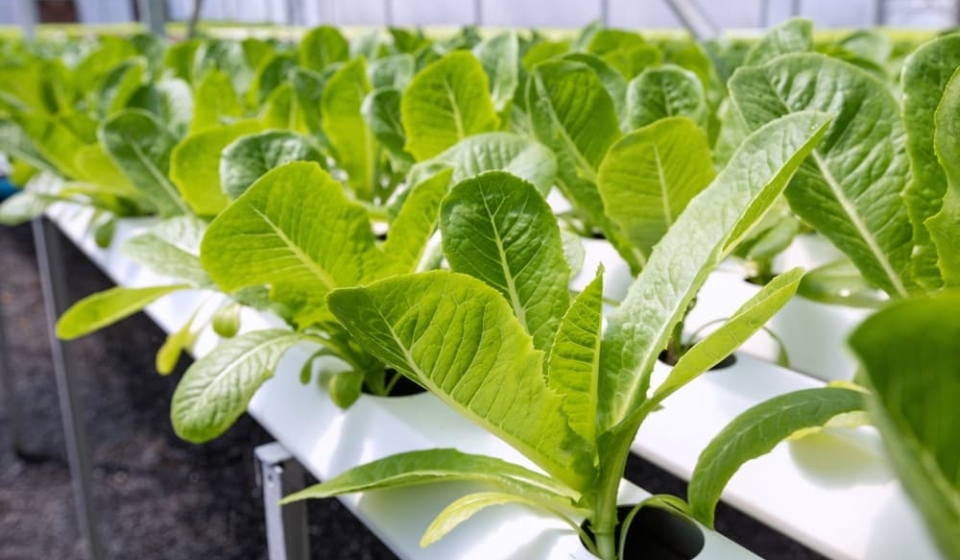The phloem is the part of a cannabis plant inside the stem and leaves. The job of the phloem is to transfer sugars, nutrients, and energy through the entire plant.
Photobiology
Photobiology is the study of the interaction between light and living organisms. Plants are autotrophs that evolved to use light energy from the sun to make their own food source via photosynthesis. Thus, light is the most critical environmental variable concerning plant growth. Without light, plants cannot survive.
Photosynthesis
Plants, algae, and some bacteria capture energy from sunlight to produce oxygen (O2) and chemical energy stored in glucose (a sugar). During photosynthesis, plants take in carbon dioxide (CO2) and water (H2O) from the air and soil. Within the plant cell, the water is oxidizing, meaning it loses electrons, while the carbon dioxide is reduced, meaning it gains electrons. This transforms the water into oxygen and the carbon dioxide into glucose. The plant then releases the oxygen back into the air and stores energy with the glucose molecules.
Photosynthetic Photon Flux (PPF)
Photosynthetic photon flux (PPF) measures the total amount of PAR that is produced by a lighting system per second (expressed as micromoles per second – μmol/s). PPF measures all the light energy in the PAR range. This metric gives us a great idea of how much usable light a particular grow light is able to emit, but it doesn’t give us the whole picture.
Photosynthetic Photon Flux Density (PPFD)
PPFD, or photosynthetic photon flux density, measures how much PAR reaches the plant at any given time (expressed as micromoles per square meter per second – μmol/m2/s). This will help you understand how high to keep your lights above your plants. Fluorescent lights have a lower PPFD than LED or HID, meaning you must keep fluorescents closer to plants. T-8 lights should be 1 inch from the plants, whereas T-5 can be 6 inches to a foot above the plants. Measuring PPFD properly requires multiple readings taken in multiple positions. A single reading only measures a specific location underneath a light source. For example, the PPFD in the center of a grow light’s footprint will always be greater than the PPFD measured two feet from the center, assuming the vertical distance from the light was equal in both readings. Grow lights that only offer a single PPFD reading won’t give you the best idea for PAR uniformity or the realistic max coverage area the light can support. Having as many different readings as possible, both vertically and horizontally, allows for the most accurate PPFD averages. Ideal PPFD depends on plant type and growth phase. A PPFD value of 200-400 is suitable for seedlings or a mother plant, 400-600 for vegetative growth, and 600-900 when you produce flowers/fruit.
Photosynthetically Active Radiation (PAR)
Wavelengths of light that drive photosynthesis are primarily found within the 400 – 700nm range. Within a plant leaf are various pigments and photoreceptors that respond to different wavelengths of PAR. These pigments and photoreceptors perceive the intensity of photons that are absorbed, which impacts the rate of photosynthesis and overall plant growth.








